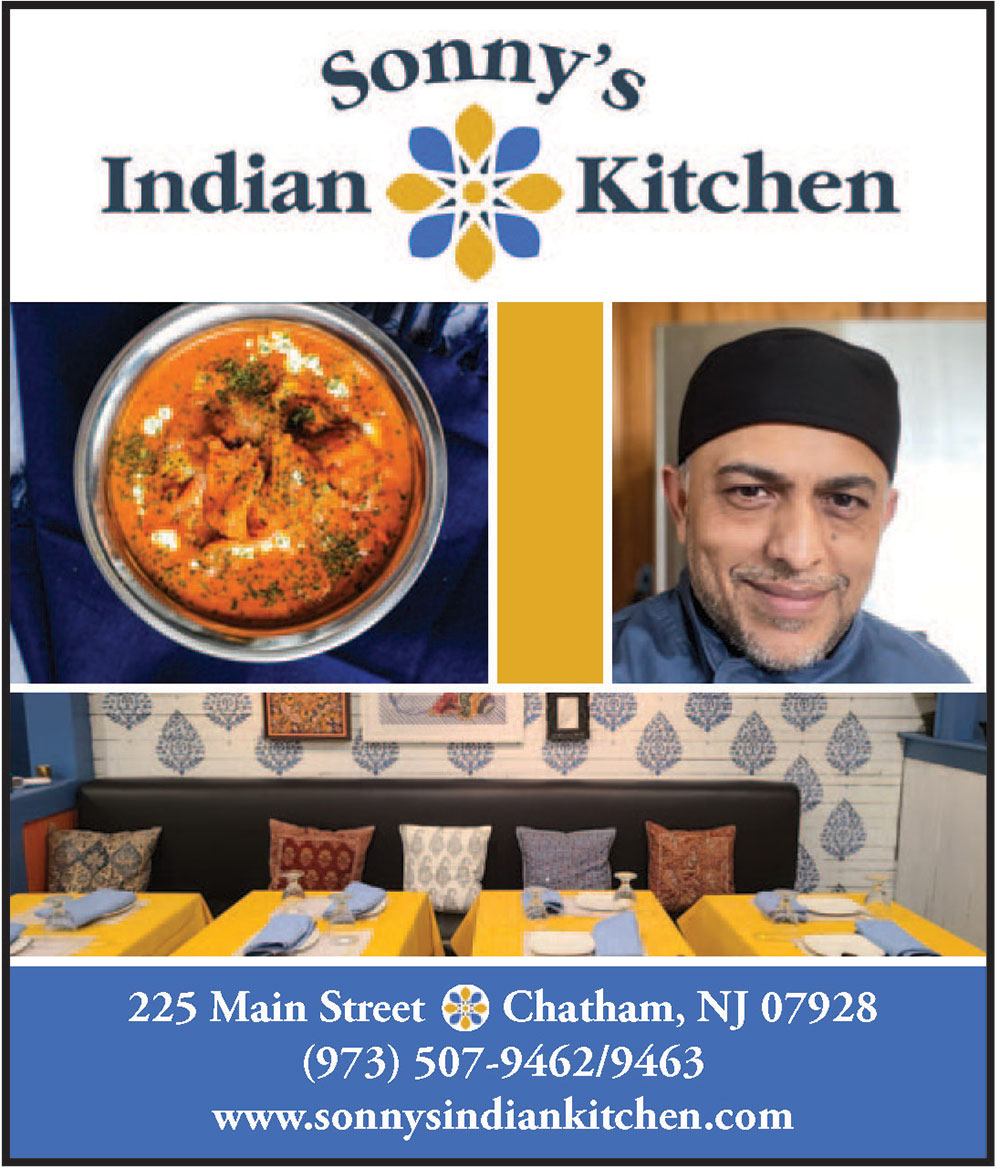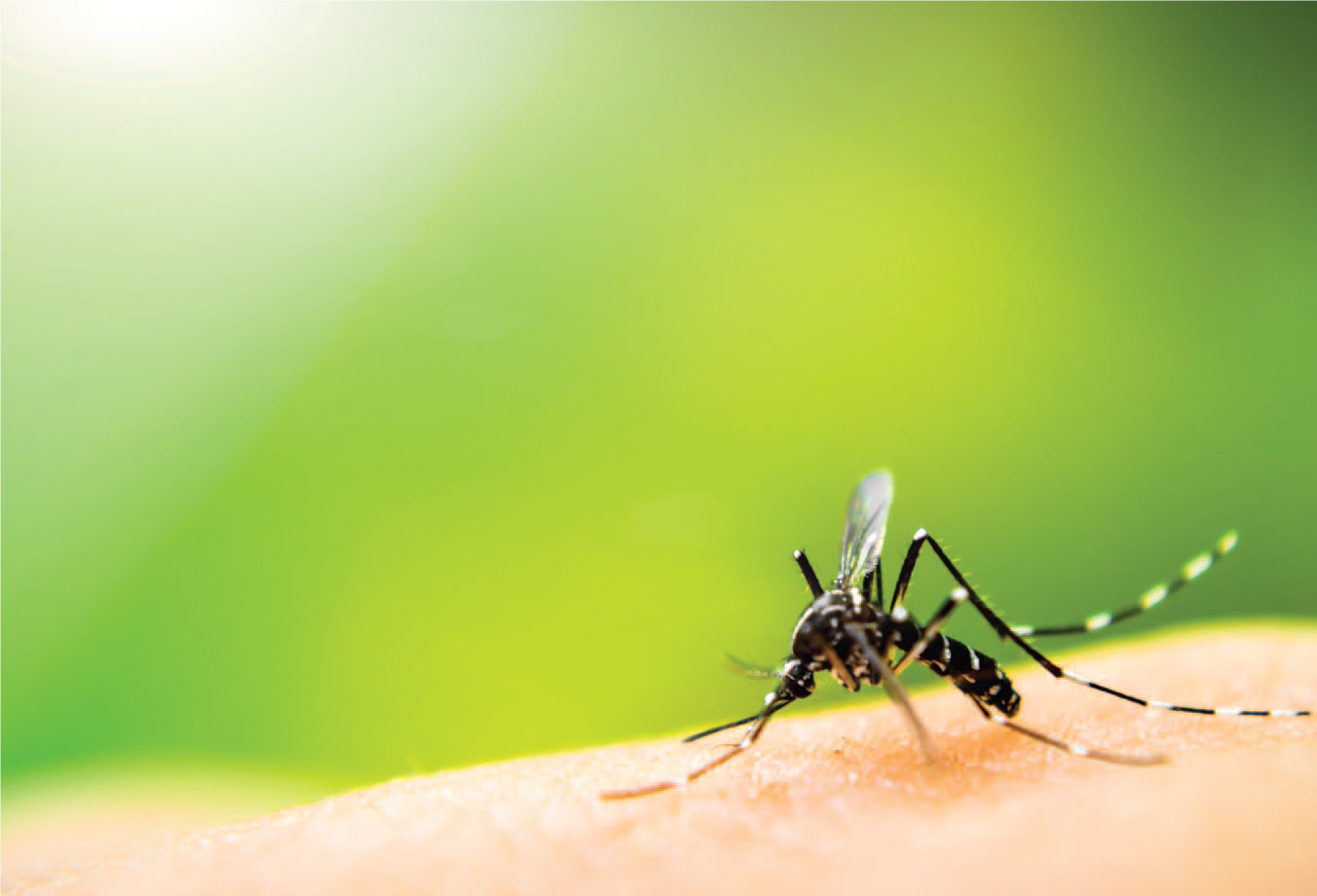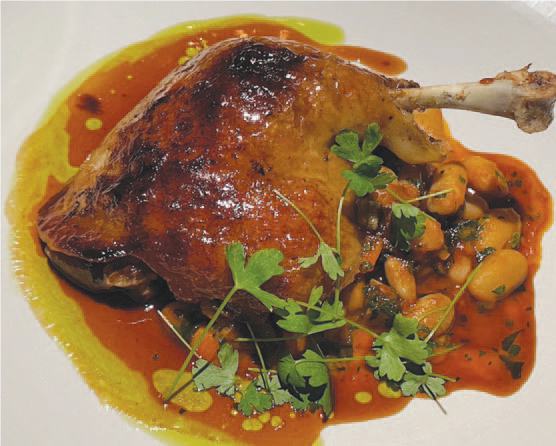There’s a lot going on in Indian curry dishes… but maybe not as much as you think.
Indian food is difficult to cook unless you own an Indian restaurant. In places like New Jersey, where this cuisine has become increasingly popular, even the most intrepid diners still operate under this assumption. Home chefs who have mastered the intricacies of Vietnamese Pho, Thai stir fry, Jamaican jerk chicken and Brazilian barbecue not only tend to be intimidated by the thought of diving into Indian curry, they find the thought of navigating their way through the aisles of places like Patel Brothers utterly terrifying.
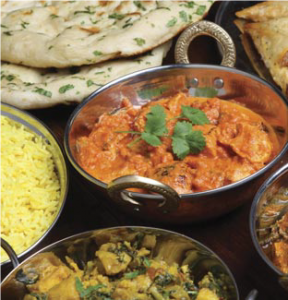
www.istockphoto.com
Granted, if you’re new to cooking Indian curries at home, you might feel a little overwhelmed. Curry is all about subtlety and complexity, after all. But once you stop to take it all in and begin to learn the differences in the food of the wonderful country of India, things will start to fall into place. Your journey into Indian cuisine will be easy and enjoyable, and change any preconceived ideas that Indian food is difficult to cook.
With 29 states and seven union territories, it is said that the language and food of India changes every 50 miles as you travel the subcontinent. Each state has its own regional specialties, and then there are sub-cuisines that reflect religion, caste, the climate and availability of local ingredients. For example, a lentil stew called sambar—known throughout the country’s southern states—will be made slightly differently wherever you visit.
Not surprisingly, everyone claims that their version is the best. Sound familiar?
It would be impossible to put all the curries of India in a single book. Great tomes have been written, and still none can be considered truly comprehensive; such is the nature of a cuisine that caters to almost 1.4 billion people—and where the ingredients used in a dish can change from village to village and even household to household (all without recipes to guide them!). It is testament to Indians’ love of food that a recipe will be refined and perfected over time to suit personal tastes: a little more spice here, a different vegetable there, and then passed down through the generations to create family favorites.
Despite these subtle differences, there are, of course, popular dishes that everyone cooks and for which India is famous, and last year I collected 50 of the best (and easiest) vegan, vegetarian and non-vegetarian recipes to make from scratch in 50 Easy Indian Curries. I also included simple instructions for pastes, rice and breads to complete an Indian meal. With a few essential Indian pantry staples and fresh ingredients—all of which can be found at any decent supermarket—each curry can be made in an hour or less, or thrown into a saucepan and left to slow cook on the stove while you get on with something else. The keys are ease and speed (plus some fun shopping adventures).
Make A List

www.istockphoto.com
On your next trip down the GSP to Patel’s (or another of New Jersey’s growing number of South Asian supermarkets), bring this list along. It’s what you’ll need to stock your “Indian Pantry” and execute every curry recipe in this article.
Asafoetida • Pure asafoetida (or heeng) has a strong, almost off-putting smell that dissipates when cooked and is used as a substitute for garlic and onions by Indians who avoid these ingredients. Just a pinch of asafoetida is enough to flavor a dish. You will find it in small plastic containers, diluted with rice or wheat flour to dull down the pungent smell.
Cardamom • Cardamom is a perfumed spice that is much loved throughout India. It is equally at home in baked treats and confections as in curries. You’ll notice the recipes in this story and in my book use both green and black cardamom pods, so buy both.
Chillies • Indian food is almost incomplete without chillies yet, ironically, the chilli plant is foreign to India—arriving with the Portuguese in the 15th century. Indian cuisine uses green and red fresh chillies, along with chilli powder, the most famous of which comes from Kashmir.
Cinnamon • Whereas cinnamon is often reserved for baking in the U.S., in India it is part of a collection of whole spices that are added to curries. Often confused with cassia—which comes from China and has a slight amount of heat—real cinnamon only grows in Sri Lanka.
Cloves • Cloves, which are not native to India, have a strong, astringent flavor profile and should be used sparingly in dishes.
Coriander • Coriander seeds are used extensively in Indian cuisine for their warm, nutty flavor. Lightly toasted, they become even more fragrant and, when powdered, they tone down other strong flavors, such as chilli. Coriander leaves (aka cilantro) are commonly added as a garnish and never cooked in order to retain their vibrant green color.
Fenugreek • The whole seeds are used as a tempering in dals, as well as being added to Indian pickles. Fresh fenugreek leaves are used extensively in cooking and their dried form—known as kasuri methi—is sprinkled on top of cooked dishes for its aromatic quality. It’s a true wonder spice.
Garam Masala • A powdery blend that roughly translates to “hot spice,” it actually doesn’t contain much heat. It is made by dry-roasting different types and quantities of spices and then blending them together. Garam masala is typically added at the end of cooking, the purpose being to add aroma and flavor, without overpowering the final dish.
Turmeric • Indian kitchens would be colorless without this wonderful spice. Known not just for its culinary use but also for medicinal and antiseptic qualities, turmeric is also the only spice that Hindus use for devotional purposes. The active ingredient in turmeric is curcumin, which is known for its healing properties. Once you gain confidence, you may even find yourself adding your own twists and flourishes. Indian food, after all, is more than an explosion of flavors, colors and spices. Like all the great world cuisines, it is a form of personal expression. Here are a half-dozen relatively simple curry dishes—each serving four—that you can make in your own kitchen and, ultimately, make your own…

Eggplant Masala
Eggplant is a popular ingredient in Indian cuisine. Roasted, grilled or fried, it adds a “meatiness” to vegetarian curries. This eggplant masala is simple and quick to make and goes perfectly with other curries. The yogurt adds a delightful fresh touch.
You’ll need…
2 large (about 2 lb.) eggplants (aubergines), cut into (3/4”) chunks
1/2 teaspoon sea salt
2 tablespoons ghee or vegetable oil
1 teaspoon black mustard seeds
3 Asian shallots, sliced
2 (3/4”) pieces of ginger, finely grated
2 garlic cloves, thinly sliced
1 long red chilli, chopped
14 oz. canned crushed tomatoes
1/2 teaspoon ground cinnamon
1/4 teaspoon ground cardamom
pinch of ground cloves
1/4 cup of natural yogurt
Cilantro and papadam (Papadam is a deep-fried crunchy dough that can be purchased pre-packaged or made at home.)
Place the eggplant in a large bowl and sprinkle with the salt. Toss to combine and set aside for 30 minutes. Rinse well and pat dry with paper towel. Heat a large heavy-based non-stick frying pan over high heat. Working in batches if necessary, add the eggplant to the dry pan and cook, stirring occasionally, for 5-6 minutes per batch, until lightly browned all over. Transfer to a plate and set aside. Heat the ghee or oil in the same frying pan over medium-high heat. Add the mustard seeds and sizzle for a few seconds. When the seeds start to crackle, add the shallot, ginger, garlic and chilli. Reduce the heat to medium and cook for 4-5 minutes, stirring occasionally, until the onion is golden. Add the tomatoes, cinnamon, cardamom, cloves and 125 ml (1/2 cup) of water and return the eggplant to the pan.
Cover and cook, stirring occasionally, for 10-15 minutes, until the eggplant is very tender and the sauce has thickened slightly. Season with a little salt, if necessary. Spoon the yogurt over the curry, garnish with coriander leaves and serve with papadams on the side.

Goan-Style Vegetable Curry
The state of Goa on the southwestern coast of India is known for its delicious fish curries, beer and a very chilled-out approach to life. But Goa also has many vegetarian dishes in its culinary repertoire, and this vegetable curry is one of the best. Coconut grows abundantly in the region, and here it adds a subtle, creamy flavor that elevates the dish.
You’ll need…
2 tablespoons coconut oil or vegetable oil
10 oz. cauliflower florets
1 large potato, peeled and cut into 1/2” pieces
1 onion, chopped
1 tomato, finely chopped
1 tablespoon ginger and garlic paste
2 small green chillies, sliced
1/2 teaspoon ground cumin
1/2 teaspoon ground turmeric
8 fl. oz. coconut milk
1 large carrot, chopped
5-6 oz. green beans, trimmed and sliced
1/4 cup freshly grated coconut, plus extra to serve (You can also use frozen grated coconut, which can be purchased at most NJ grocery stores.)
1/2 teaspoon sea salt
A handful of cilantro, chopped, plus extra to serve
1-2 teaspoons tamarind purée, to taste
Steamed basmati rice
Heat a large frying pan over medium heat and add half the oil. Add the cauliflower and potato and sauté for 4-5 minutes, until lightly browned. Transfer to a plate and set aside. Add the remaining oil to the pan along with the onion and sauté for 5-6 minutes, until softened. Add the tomato and cook for 2 minutes or until softened, then add the ginger and garlic paste and cook until fragrant. Add the chilli and spices and cook, stirring, for a further 2 minutes or until fragrant.
Add the coconut milk, along with 1 cup of water, all the vegetables and the grated coconut, and bring to a boil over medium heat. Reduce the heat to a simmer, season with the salt and cook (covered) for 10-12 minutes, until the vegetables are tender. Stir in the chopped coriander and tamarind, to taste. Garnish with extra coriander and/or extra coconut and serve with steamed basmati rice.

Goan-Style Prawn Curry
Goans are particularly proud of their prawn curries and when you make this you’ll see why. The key to this dish is to ensure that the prawns are not overcooked. Served with lime wedges for extra zing. Like all of the dishes in this story, it serves four but be warned: Everyone will probably be going back for seconds.
You’ll need…
1 tablespoon peanut oil
1 onion, finely chopped
1 small tomato, finely chopped
1 tablespoon ginger and garlic paste
2 teaspoons sweet paprika
1 teaspoon ground coriander
1/2 teaspoon ground cumin
1/2 teaspoon freshly ground black pepper
1/2 teaspoon cayenne pepper
10 fl oz. coconut milk
2 lbs. raw prawns, peeled and deveined, with tails left intact
1/2 teaspoon sea salt
1-2 teaspoons tamarind purée, to taste
Cilantro for garnish
Steamed basmati rice
Lime wedges
Heat the oil in a large frying pan over medium heat. Add the onion and cook, stirring occasionally, for 6-8 minutes, until softened and starting to brown. Add the tomato and cook for 2 minutes, or until softened. Add the ginger and garlic paste and cook until fragrant.
Add the spices and cook, stirring, for a further 2 minutes.
Add the coconut milk and bring to a boil, then reduce the heat to a simmer and add the prawns, salt and tamarind purée. Stir and cook for 4-5 minutes, until the prawns are just cooked through. Scatter with coriander leaves and serve with steamed basmati rice and squeeze the lime over the entire dish.
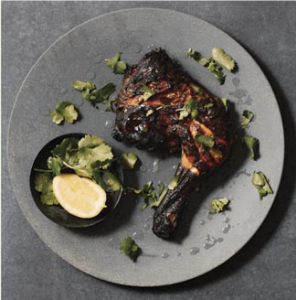
Tandoori Chicken
A tandoor is a clay oven set into the earth and fired with wood or charcoal. It can reach eye-watering temperatures of up to 900°F, allowing marinated meat to cook very quickly. Alas, not many of us have a tandoor in the backyard, but you can still rustle up a reasonable facsimile of this dish using a domestic oven. The trick is to spatchcock (aka butterfly) the chicken— a technique that will change your culinary life if you don’t know it already, even if you never cook a single Indian meal.
You’ll need…
Whole chicken, about 3 1/2 lb.
3/4 cup natural yogurt
1/2 cup Tandoori curry paste (see below)
Cilantro
Lemon wedges
1 package/4 pc. of naan
First, butterfly the chicken. Using kitchen scissors, cut along both sides of the backbone and remove. Turn the chicken over and place on a clean work surface. Using the heel of your hand, press down firmly on the breastbone to flatten. Score the chicken about 1/2 in. deep through the thickest parts of the breast, thighs and legs. Combine the yogurt and tandoori curry paste in a bowl, then rub all over the chicken, rubbing well into the scored areas. Transfer to a baking tray lined with baking paper, then cover and marinate in the fridge for 2-4 hours.
Preheat the oven to 465°F, using the convection option if you have it. Roast the chicken for 30 minutes or until it starts to char in spots. Reduce the oven temperature to 300°F and continue to roast the chicken for 5-10 minutes, until cooked through. Remove from the oven and set aside to rest, covered loosely with foil, for 10 minutes. Scatter the coriander over the chicken and serve with lemon wedges and naan on the side.


Malai Kofta
Everyone in New Jersey seems to have their own family recipe for meatballs. Well, since kofta is basically an Indian meatball, this may be your initial comfort zone. Malai kofta is an excellent dish to make when entertaining because it never fails to wow everyone. You can either serve the koftas on their own with the sauce on the side for dipping or stir the koftas through the curry at the end of cooking and serve with rice.
You’ll need…
14 oz. floury potatoes (low in moisture, high in starch)
Sea salt
1 cup grated paneer cheese (you can substitute tofu for vegans)
1 tablespoon finely chopped cashew nuts
1 tablespoon finely chopped raisins
3 tablespoons corn starch
1/2 teaspoon garam masala
1/2 teaspoon chilli powder (optional)
Vegetable oil for deep-frying
1/4 cup of cream
Steamed basmati rice
Malai kofta sauce…
1/3 cup of vegetable oil
1 onion, finely chopped
1 tablespoon ginger and garlic paste
2 cups puréed tomatoes
2 tablespoons cashew nuts, finely ground
1 teaspoon cumin seeds
1 teaspoon ground coriander
1/2 teaspoon ground turmeric
1 fresh or dried bay leaf
1 cinnamon stick
4 cloves
3 green cardamom pods, bruised
1/2 teaspoon dried fenugreek leaves, crushed
1/2 teaspoon garam masala
Peel the potatoes, then transfer to a saucepan, cover with cold water and add a good pinch of salt. Bring to a boil and cook until tender. Drain, then mash and set aside to cool. Combine the potato, paneer, cashews, raisins, corn starch, garam masala, chilli powder (if using) and 1/2 teaspoon of salt in a bowl. Knead the mixture into a soft dough, then divide into 12 portions and roll into smooth balls. Set aside.
To make the sauce, heat three-quarters of the oil in a frying pan over low heat. Add the onion and ginger and garlic paste and cook for 10 minutes. Add the tomato purée, ground cashews and 1 cup of water and simmer for 5-7 minutes, until slightly thickened. Season to taste with salt. Transfer this mixture to a food processor and blitz to a smooth sauce. Wipe the pan clean. Heat the remaining oil in the pan over medium heat and add the cumin seeds, ground coriander, turmeric, bay leaf, cinnamon stick, cloves and cardamom pods and cook, stirring, for 1 minute, until fragrant. Pour the sauce back into the pan and add the fenugreek leaves and garam masala. Gently warm through.
Back to the kofta…Heat enough oil for deep-frying in a saucepan to 375°F. Working in batches, deep-fry the kofta for 2-3 minutes, until well browned on all sides. Transfer to a plate lined with paper towel to drain, then gently stir through the sauce. Transfer the malai kofta to a serving dish and drizzle the cream over the top. Serve with the steamed basmati rice on the side.
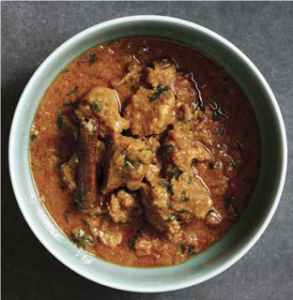
Lamb Rogan Josh
A famed dish from the beautiful state of Kashmir, the fiery red color of rogan josh comes from the chillies that are added in generous quantities. Rogan josh is usually cooked with tomatoes, but they are omitted here to allow the flavor of the lamb to shine through even more.
You’ll need…
2-plus lb. boneless lamb shoulder or leg, cut into 1” pieces
1 1/2 cups natural yogurt
1 teaspoon sea salt
2 oz. ghee (Indian clarified butter)
1 cinnamon stick
2 teaspoons green cardamom pods, bruised
4 brown or black cardamom pods, bruised
1/2 teaspoon cloves
3 onions, chopped
2 tablespoons ginger and garlic paste
1 tablespoon Kashmiri chilli powder
2 teaspoons sweet paprika
2 teaspoons ground turmeric
Large handful of chopped cilantro
1 teaspoon garam masala
4 pc. Paratha (Indian flatbread)
Combine the lamb, yogurt and 1/2 teaspoon of the salt in a large bowl. Cover and set aside to marinate. Heat the ghee in a heavy-based saucepan over medium heat. Add the cinnamon, cardamom pods and cloves and cook, stirring for 30 seconds or until fragrant. Add the onion and remaining salt, reduce the heat to medium–low and cook, stirring occasionally, for 20–25 minutes, until golden brown.
Add the ginger and garlic paste and cook, stirring for about 30 seconds, until fragrant. Add the lamb mixture, chilli powder, paprika and turmeric to the pan. Mix well and bring to a boil over medium heat. Reduce the heat to low and cook, covered, for 80 to 90 minutes, until the lamb is tender. Stir in the coriander and garam masala and season to taste. Serve with paratha on the side.
Editor’s Note: In her 50 Easy Indian Curries (Smith Street Books, $29.95), Penny Chawla covers restaurant classics—such as dal makhani, pork vindaloo and saag paneer—and lesser-known regional gems, including beef Madras and Bengali fish curry. “There is a curry here for everyone.” After watching Bend It Like Beckham, many wondered what was so special about making a “full Punjabi dinner.” Find this story at edgemagonline.com and look for bonus content that clears it all up!
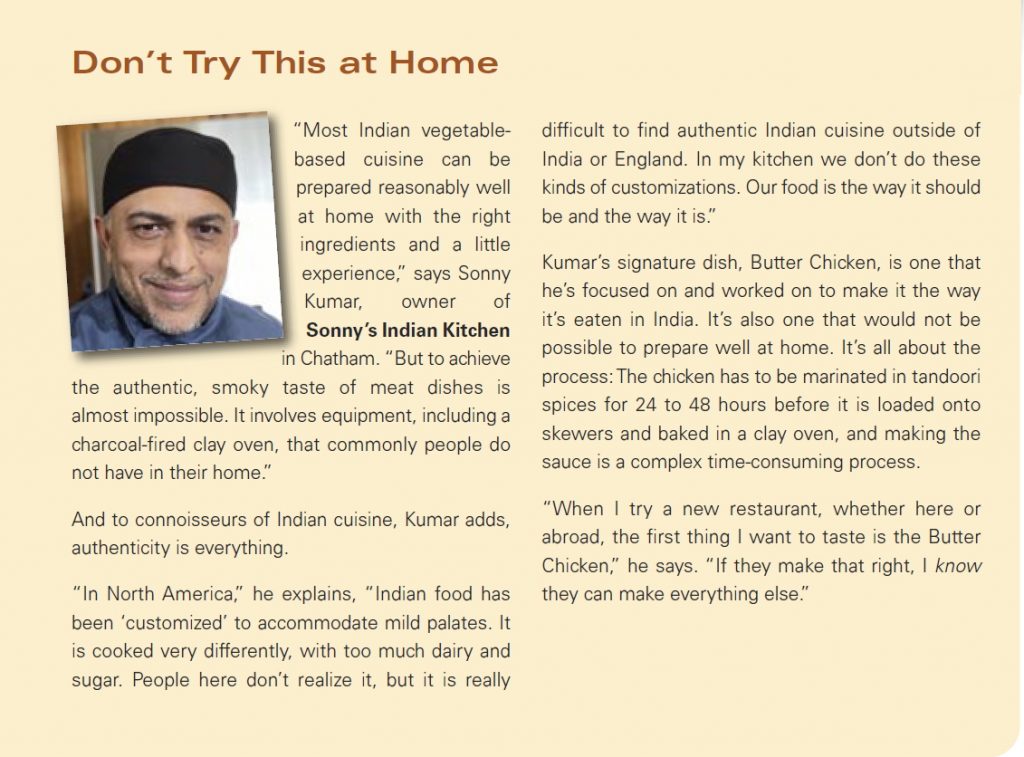
5 Minutes with…
Actor/Director Hugh Laurie
You have directed before, on House and other projects. Coming off of [Agatha Christie’s] Why Didn’t They Ask Evans? how do you assess yourself as a director at this point?

Upper Case Editorial
I’m not as calm as I would like to be [laughs]. I tended to become more agitated than I would have liked to have been. I think the problem is that any job you do in life is only difficult or easy in relation to how much you care about the outcome. Brain surgery is pretty easy…if you don’t mind the patient dying. But if you care a lot about something, things could be almost infinitely difficult or infinitely problematic, I should say. There will always be things that you wish—if only it could be this instead of that—and I confess that I was at times not as level-headed as I wish I could have been.
What are the most important qualities you need to be an actor, and what are the most important qualities you need to be a director?
Wow. I suspect the list of qualities you need to be a director may not be containable in a single person. You probably need seven people to do the job of a director in the way that it really ought to be done. It seems to me that the calls upon your judgment and time and energy and stamina are almost infinite. And the opportunity for making mistakes, likewise, is almost infinite. I think the similarity between acting and directing is that actors and directors need to be people who watch people. They need to watch people and know instantly what is true and what isn’t.
What got you started writing the adaption of Why Didn’t They Ask Evans?
It’s a murder mystery, but it has a kind of slight screwball feel to it. And one of the most remarkable things about it is that—and this I believe is unique for
Agatha Christie and maybe even unique for murder mysteries—the real mystery is not who the killer is. I mean, it is a mystery and we have to track that down, and he or she must be apprehended and brought before the law. But the real mystery is What does the question of the title mean? It’s like a 100-dimension Wordle where you’re trying to solve this puzzle and, until you solve it, it’s not really satisfying. You might catch the killer, but until you understand—until you decipher the question and answer the question—it doesn’t really satisfy. I think that is her genius.
Most of the clever repartee and witty dialogue in this series comes from the women characters. Do you agree…and did you have a part in that or was it all Dame Agatha?
I’ll make a confession now: Frankie Derwent, the heroine of Why Didn’t They Ask Evans? was my first- ever crush. I found her absolutely intoxicating. She’s quick and funny and bold and ready to take a chance. I just found her such good company. I was completely knocked over. And I do agree with you. The female characters, they’ve got some strong stuff. I would never in a million years dream of taking any credit. Along with the rest of us, I am just hanging on to the coattails— well, it wouldn’t be coattails—hanging on to the hem of the skirt of Dame Agatha for the ride.
Editor’s Note: Hugh Laurie adapted and directed Why Didn’t They Ask Evans?—a tale of two amateur detectives who get in over their heads investigating a murder—for a limited-run series debuting on BritBox this spring. For eight seasons, Laurie played the title role in the medical drama House, which was set in a New Jersey hospital and co-starred Lisa Edelman, who sat for a 2014 photo shoot and interview with EDGE. Lucy Allen of The Interview People, who interviewed Kristen Stewart in our last issue, conducted this Q&A.




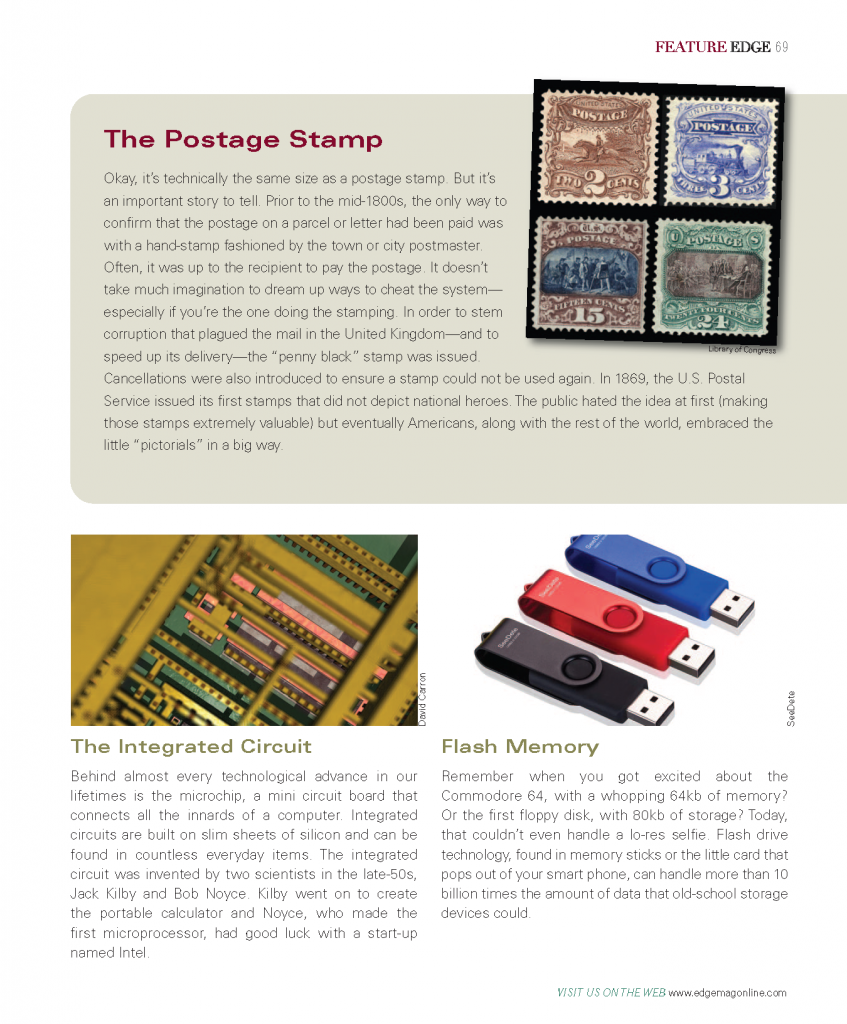
A Path Between EXTREMES
DBT treatment builds a life worth living.
By Christine Gibbs
May is Mental Health Awareness Month. It would not be an exaggeration to say that, thanks to the COVID pandemic, this May we are more aware than ever of the precarious state of our nation’s mental health. The National Institute of Health (NIH) has compiled a daunting set of statistics, including that one in five Americans today is living with at least one of a wide range of mental issues. That translates into more than 50 million people.

www.istockphoto.com
Not that COVID is the lone culprit. Pre-pandemic life was already a pressure cooker of high-stress triggers such as financial panic, job anxiety, inflation, debt— I could go on and on, but suffice it to say that life for almost everyone can be a challenge. However, burnout syndrome has certainly been exacerbated by COVID these past two-plus years and there has been a noticeable increase in the number of Americans suffering from depression and anxiety that can reliably be traced to COVID-specific restrictions, from lockdowns to mask mandates. That most definitely includes children, adolescents and emerging young adults who are exhibiting signs of depression in greater numbers as a result of forced isolation and remote education.
What is the actual degree to which we can attribute our elevated levels or incidences of stress and depression to the pandemic? That is endlessly debatable…and it also misses the point. If it feels as if you or a loved one is struggling emotionally—regardless of why—the more critical question is where should I look for help? Admitting that a problem exists, and recognizing that the situation has escalated to a point where managing it without help is no longer possible, is a critical first step. If you or someone close to you is exhibiting behavior that is concerning, harmful or uncontrollable, the time is now to seek help. Trinitas offers a full array of mental health support and services, providing almost 200,000 behavioral health outpatient visits a year.
One program that has enjoyed particular success is the Trinitas Institute for Dialectical Behavior Therapy and Allied Treatments—the DBT Institute, for short— which is headed by Co-Directors Atara Hiller, PsyD and Essie Larson, PhD. Dr. Hiller manages the Adolescent DBT Program, and Dr. Larson runs the Adult DBT Program.
“It Depends”

Atara Hiller, PsyD

Essie Larson, PhD
DBT is a type of cognitive behavioral therapy with the goal of building a life worth living by developing behavioral skills to improve impulse control, emotional regulation, interpersonal effectiveness and overall functioning, and replace old harmful ways of thinking and behaving with new, healthier ones. A fundamental principle of DBT treatment is finding “middle-of-the road” solutions to help overcome the extreme positions that interfere with adapting to real-life situations. In other words, for many of us, the concept of “it depends” is a fact of life—we recognize that the everyday decisions and situations we encounter are not binary, either/or, black-and-white, etc. For some people, however, this is extremely difficult to accept and tolerate. For them, the world is filled with battles between opposing forces of, for example, right and wrong or good and evil. Needless to say, it is an emotionally exhausting way to go through life.
When discussing the dialectical perspective, Dr. Hiller explains, “The key to successful adjustment may be accepting that the real truth is that there is no absolute truth at all. DBT accepts that two seemingly opposite truths can both exist at the same time, and that it is possible to modify behavior patterns to adopt a reasonable middle ground as a healthier response, instead of succumbing to either extreme position.”
“The reality that is encouraged is that there is no absolute truth, but rather everything is a mixed bag,” Dr. Larson adds.
The emphasis in DBT is placed on increasing emotional and behavioral regulation so that individuals can make effective choices that help them work towards their long-term goals. Clients undergoing this therapy are passionate about almost everything—and consequently are often judged as being irrational, attention-seeking, excessive or hot-headed because they react so quickly and take so long to cool down.
At the DBT Institute, these individuals are regarded as “exquisitely sensitive” and “super sensors.” The objective is to teach and encourage self-acceptance by validating their passionate internal experiences, while also guiding them to identify and change behaviors that interfere with reaching their personal goals. By providing a supportive, validating, and goal-oriented therapeutic environment, the team of DBT therapists helps the clients (and in the case of adolescents, their families as well) to learn and use the variety of skills taught in the treatment.
 Getting Help
Getting Help
We all know family members, friends or co-workers who seem to be intractable in their views and behavior at times. However, individuals who benefit the most from DBT struggle with this at a much higher level of intensity. Typically, a DBT candidate presents as a person with challenges in multiple areas of life who has had previous unsuccessful experiences with other types of therapy. Behaviors such as self-harm, impulsivity, substance use, eating disorders and aggression become these individuals’ primary problem-solving methods to tolerate the debilitating emotional distress that they experience. Unfortunately, these behaviors seriously interfere with quality of life and social integration.
The objective of developing a healthy skillset is reflected in the DBT mantra: Build a life worth living! Comprehensive, outpatient DBT programs that follow the empirically based model are organized into three hours of weekly meetings—consisting of two hours of skills group (Adult DBT groups are for the clients only, while Adolescent DBT groups include parents/ caregivers) and one hour of individual therapy for the client. Between session, phone coaching is also available to help clients use their skills in their day-to-day lives. In addition, both the Adult and Adolescent programs offer services for graduates of the program to help them further solidify what they have learned. Across the Adult and Adolescent programs there are nine staff members, including Dr. Hiller and Dr. Larson. In addition, there are between 7 and 10 trainees at any given time. Several of the staff and trainees see both adult and adolescent DBT clients.
The adult DBT program requires an initial commitment of 52 weeks, followed by the opportunity to extend for another 26 weeks to complete two full cycles of the skills curriculum. The duration for one cycle of the curriculum for English-speaking adolescents/families is 20 weeks, whereas for Spanish-speaking adolescents/ families, the duration for one cycle of the curriculum is 24 weeks (because the groups are provided in both English and Spanish). Adolescent DBT requires that at least one parent/caregiver must also commit to the treatment by attending group and family sessions, and individual parent coaching sessions as needed. This is because having parents/caregivers support the use of DBT skills is essential. Clients in the Adult DBT program attend treatment alone with free monthly education nights provided for family members and friends who are interested in learning more about DBT treatment, DBT skills, and supporting their loved ones. All types of insurance are accepted. There is currently a substantial waiting list for both programs.
 During the pandemic, the Institute continued to serve clients through Zoom sessions. Despite an adjustment period, therapy quality was never compromised. Some clients (especially those living at a distance from Trinitas) found teletherapy to their liking, while others rejoiced when in-person therapy resumed. Most importantly, all of the DBT clients continued to make progress in the face of heightened stress and anxiety.
During the pandemic, the Institute continued to serve clients through Zoom sessions. Despite an adjustment period, therapy quality was never compromised. Some clients (especially those living at a distance from Trinitas) found teletherapy to their liking, while others rejoiced when in-person therapy resumed. Most importantly, all of the DBT clients continued to make progress in the face of heightened stress and anxiety.
“The skills we teach were the perfect tools to deal with uncertainty and major life changes,” says Dr. Larson.
Key Ingredient
Both Dr. Hiller and Dr. Larson emphasize that the indispensable component of successful completion of the DBT program is “commitment…commitment…and more commitment.” Clients must first believe, even if hesitantly, that their life can potentially improve and then they must be willing to put in the hard work—with the support and encouragement of their therapists—to start making it happen. “The foundation of any DBT program is that it is totally voluntary and therefore, by definition, requires an incredibly high degree of resolve,” Dr. Hiller explains. To be accepted into either the adult or adolescent programs, clients must sign a personal contract outlining the terms of their commitment.
 Modifying ingrained behavior patterns requires a whole-hearted dedication to achieving a balance between emotional extremes and learning how to identify and make more effective choices. Before being accepted, the DBT team spends time screening prospective clients on the telephone, followed by personal interviews to discern levels of motivation, increase commitment, troubleshoot potential issues and agree on a collaborative approach to reaching goals. The DBT program provides the tools and encouragement; the commitment to apply them to daily life is up to the client.
Modifying ingrained behavior patterns requires a whole-hearted dedication to achieving a balance between emotional extremes and learning how to identify and make more effective choices. Before being accepted, the DBT team spends time screening prospective clients on the telephone, followed by personal interviews to discern levels of motivation, increase commitment, troubleshoot potential issues and agree on a collaborative approach to reaching goals. The DBT program provides the tools and encouragement; the commitment to apply them to daily life is up to the client.
As a goal-oriented therapy, successfully completing what is referred to as Stage 1 DBT treatment in the Adult Program requires clients to demonstrate at the end of two cycles of the curriculum that they have moved closer to their goals by learning and applying the skills taught to them. In the Adolescent Program successfully completing Stage 1 DBT treatment may occur after one cycle, although most families stay for two cycles to solidify the improvements. Time limited graduate level treatment can be arranged for certain clients in both the Adult and Adolescent Programs, however Dr. Larson emphasizes that, compared to many other types of mental health therapy, DBT is meant to have a tangible end point. “DBT is a recovery-based model,” she says. “The goal is to get clients to the point where they no longer need therapy.”

Editor’s Note: The Trinitas Institute for DBT and Allied Treatments for adults is located at 654 East Jersey Street in Elizabeth (908) 994-7087. Adolescent DBT treatment is located at 655 East Jersey Street (908) 994–7378 (English) and (908) 994–7589 (Spanish). For more information, visit dbtnj.org. The Institute also offers a variety of training, supervision and consultation services to support clinicians interested in learning DBT or to hone their DBT therapy skills. Clinicians who are still in school or already licensed may apply to formally join the DBT Institute teams for comprehensive training. Applications can be found on the website.
A change of environment can transform the world of a master painter, photographer and art conservator. Villo Varga revealed her penchant for messages all over New York City. Born in Budapest, Hungary she defected in 1983, having garnered hefty experience, studying with Professor Erno Fischer at the Academy of Fine Arts and the Museum Restorers’ Methodology Center, working as conservator of the Hungarian National Gallery, and working as professional photographer. But in America, her artwork turned to ever-changing urban “messages” and images not to be lost forever.



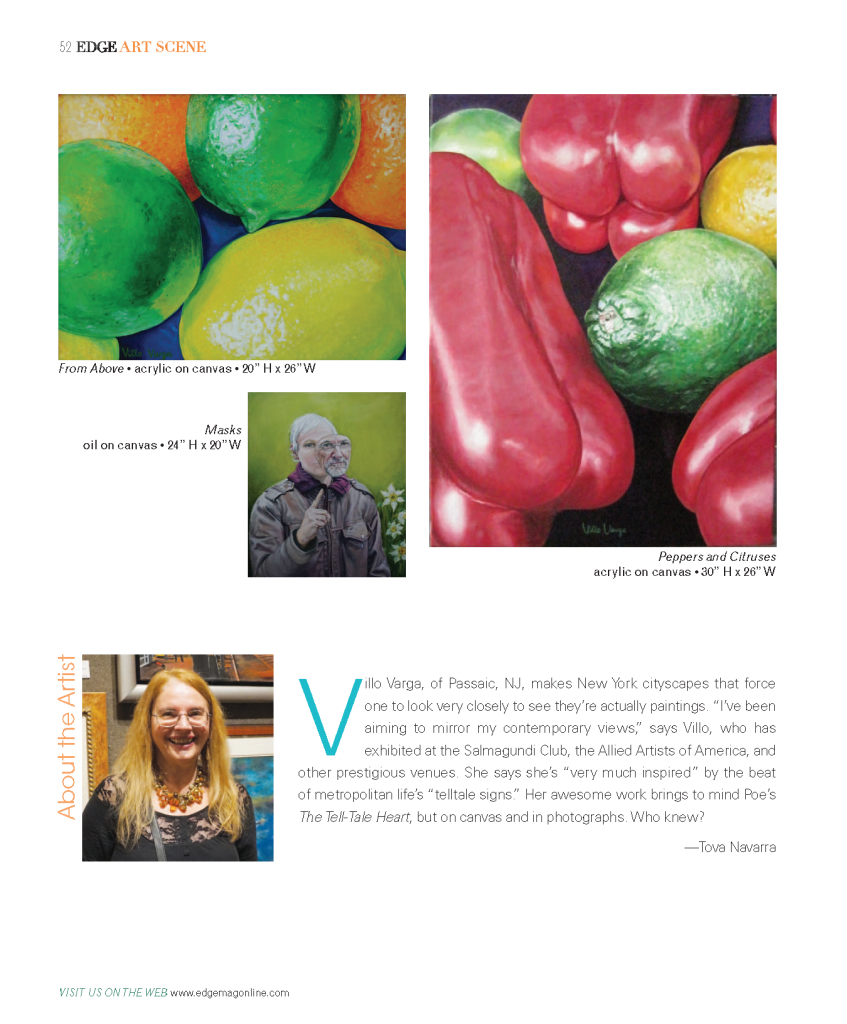
Villo Varga, of Passaic, NJ, makes New York cityscapes that force one to look very closely to see they’re actually paintings. “I’ve been aiming to mirror my contemporary views,” says Villo, who has exhibited at the Salmagundi Club, the Allied Artists of America, and other prestigious venues. She says she’s “very much inspired” by the beat of metropolitan life’s “telltale signs.” Her awesome work brings to mind Poe’s The Tell-Tale Heart, but on canvas and in photographs. Who knew?
—Tova Navarra
Buzzing Under the Radar
In this year of vaccine hyper-awareness, the first-ever vaccine against the deadliest of all human parasites has gone almost unnoticed.
By Mark Stewart
 Over the past year, chances are that you have heard more facts and figures about vaccines than in all of the other years of your lifetime combined. Yet while we have all become intimately familiar with the COVID-19 vaccine, there is another vaccine on the market, which—in any other year—would have been the real headline-maker. Last year, the World Health Organization (WHO) announced that it had approved use of the first-ever vaccine that is effective against malaria, a mosquito-borne disease that can kill within 24 hours of its flu-like symptoms appearing.
Over the past year, chances are that you have heard more facts and figures about vaccines than in all of the other years of your lifetime combined. Yet while we have all become intimately familiar with the COVID-19 vaccine, there is another vaccine on the market, which—in any other year—would have been the real headline-maker. Last year, the World Health Organization (WHO) announced that it had approved use of the first-ever vaccine that is effective against malaria, a mosquito-borne disease that can kill within 24 hours of its flu-like symptoms appearing.
“Malaria vaccines have been in development since the 1960s,” says Dr. William E. Farrer, Chief of Infectious Diseases at Trinitas (left). “On October 6, WHO released a recommendation for widespread use of the RTS,S/AS01 malaria vaccine among children living in sub-Saharan Africa and other regions with moderate to high P. falciparum malaria transmission.”
Plasmodium falciparum is the parasite that transmits falciparum malaria, the deadliest form of the disease, which accounts for roughly 50% of cases worldwide and virtually all malarial deaths. For the record, that makes P. falciparum the deadliest of all human parasites. “The vaccine requires three primary shots and a booster,” Dr. Farrer explains. “In large trials, it decreased clinical and severe malaria by about 30%. This is only moderate efficacy, but represents a historic step forward in controlling malaria and could prevent many cases of this dread disease and many deaths.”
Dr. Tedros Adhanom Ghebreyesus, WHO Director General, also described it as a historic moment, predicting it would prevent thousands of deaths a year. Currently, malaria is estimated to kill more than a quarter-million young people annually and over 400,000 in all (estimates fluctuate wildly depending on the source, but the numbers are undeniably huge). Even when it does not kill, malaria can return to sicken the same person several times over the course of a lifetime, or even in the same year—devastating the immune system over time, which makes it vulnerable to other diseases.
 The new vaccine, which has been recommended for children five years old and younger, marks a significant step in an effort to conquer malaria that has seen worldwide deaths drop by 60% in the last two decades, and the number of cases cut nearly in half. Unfortunately, progress reached a kind of plateau around 2015 and the numbers have remained more or less constant since then. The recent breakthrough, which activates the immune system to battle the malaria pathogen, owes much to the work done in speeding COVID vaccines to market.
The new vaccine, which has been recommended for children five years old and younger, marks a significant step in an effort to conquer malaria that has seen worldwide deaths drop by 60% in the last two decades, and the number of cases cut nearly in half. Unfortunately, progress reached a kind of plateau around 2015 and the numbers have remained more or less constant since then. The recent breakthrough, which activates the immune system to battle the malaria pathogen, owes much to the work done in speeding COVID vaccines to market.
That being said, malaria is not caused by a virus, like COVID, nor by bacteria. Malaria is spread through a parasite which has over 5,000 genes, as opposed to SARS-CoV-2, which has only 11. That is a major reason why malaria has been so good at befuddling vaccine researchers. Indeed, the new RTS,S vaccine will still need to be combined with conventional malaria-prevention strategies—insecticides, netting and artemisinin-based drug therapies—in order to be fully effective. Artemisinin, discovered in 1972, is extracted from sweet wormwood, a plant used in traditional Chinese medicine; it earned the woman who discovered the breakthrough medicine, Tu Youyou, a Nobel Prize. The maddening aspect of fighting malaria is that a vaccine series must target the parasite at all of the different stages of its life cycle. The idea is to “get it” at one stage if it “misses it” at another, with the goal being to kill the parasite before it infects the liver.
 Impact on the Home Front
Impact on the Home Front
Does the malaria vaccine have any relevance here in New Jersey? Absolutely. More than 2,000 malaria cases are reported in the United States each year, the vast majority coming from Americans vacationing in tropical countries or returning to their countries of origin to visit friends and family. Malaria can be transmitted to a fetus by its mother when bitten by a mosquito carrying the disease, resulting in low birth weight or premature delivery, as well as other more serious (and potentially deadly) health problems to a newborn.
The number of reported cases in Western Hemisphere nations with strong ties to the Garden State—including Mexico, Brazil, Colombia, the Dominican Republic, Nicaragua and Haiti—top 5 million annually. That pales in comparison to India, which recently topped 100 million cases. Vietnam and Indonesia may have more than an estimated half-billion cases in a typical year.
Humans and mosquitoes both thrive near water, and thus have lived together for countless thousands of years—so long, in fact, that this relationship has “imprinted” itself on our genome. The origin of sickle cell anemia, for instance, is a genetic variation that very likely began as a result of malaria. Most people develop antibodies against malaria by the time they reach adulthood, but it takes a grim toll on children, particularly in Africa, where more than 90% of the world’s cases are recorded. The new vaccine completed its first trial run from 2019 to 2021 in Ghana, Kenya and Malawi. It proved particularly effective against Plasmodium falciparum—as mentioned earlier, the deadliest malaria parasite (there are five in all).

www.istockphoto.com
Perhaps because humans and mosquitoes share an evolutionary history, the disease has shown an ability to mutate in response to everything we’ve done to fight it. It is anticipating the next mutation (and the next and the next and the next) that also proved challenging to the development of an effective vaccine. An example of this is the discovery in 2019 of a malarial strain that is resistant to Artemisinin. The mutation took place in Africa instead of Southeast Asia (where malaria mutations typically take place), further raising concerns because the parasite would have mutated independently to resist treatment.
A First Step, But Hardly the Last
The new RTS,S vaccine is not the be-all end-all in the fight against malaria, as Dr. Farrer pointed out. The 30% effectiveness number has drawn criticism from those who would wait for a more effective vaccine before launching the ambitious four-dose campaign in some of the world’s most remote, at-risk regions. However, it is an enormously encouraging first step upon which better vaccines can be built. The mRNA technology wielded against COVID, for instance, holds huge promise in this regard.

www.istockphoto.com
The new vaccine, which goes by the brand name Mosquirix, is the culmination of a research and development partnership, spearheaded by the pharmaceutical giant GlaxoSmithKline, that began in 1987. In recent years, it has been funded by the Bill & Melinda Gates Foundation, among others. In addition to being the first malaria vaccine, Mosquirix holds the distinction of being the first-ever vaccine for any parasitic disease.
An uptick in HS cases has the Trinitas Wound Center on alert.
By Mark Stewart

www.istockphoto.com
Healthcare consumers are always encouraged to seek second opinions if they have doubts or questions about a diagnosis or course of treatment. But we don’t always do that, do we? Especially not for the “small stuff”—for instance, conditions or maladies that don’t seem like a big deal at first. Unfortunately, small stuff can become a big deal, leaving us embarrassed and confused about whom to trust and where to find someone who’ll get it right. The Trinitas Center for Wound Healing and Hyperbaric Medicine sees more than its fair share of cases like this. The combination of a missed diagnosis and/or a patient’s frustration/fear/procrastination can result in the kinds of tough cases that Dr. Michael Zaboski, Medical Director of the Wound Center, encounters almost every day.
Recently, Dr. Zaboski noticed an uptick in the number of patients presenting with advanced cases of Hydradenitis Suppurativa—HS, for short—and it has him puzzled and concerned. “We had four active cases here in February, and each individually had been chronically ill for years,” he says. “That may not seem like a lot, but in my entire career here I’ve seen maybe 15 or 20.”
HS is a painful and unsightly skin condition for which there is currently no cure. However, it is treatable and manageable when caught early. The problem is that some doctors, including experienced dermatologists, do not recognize HS in its early stages, leading to misdiagnosis.

BMC Dermatology
HS outbreaks occur when the tiny sebaceous gland, which opens into a hair follicle and secretes “lubricant” for the hair and skin, does not produce properly and becomes blocked, creating a small, painful bump. These bumps occur in clusters near apocrine (sweat) glands, most commonly in the underarm and groin areas—including the gluteal, perineal and sacral regions—under the breasts and occasionally on the neck. HS may look like a bad case of acne at first, but despite the fact that it frequently starts in a person’s late teens or early 20s, it’s not acne at all.
“Hydradenitis Suppurativa ranges from a field of dark red boils or painful bumps in the underarm or private areas—which can be mistaken for acne—to more severe bumps that form sinuses that connect and spread, almost like a prairie dog field,” Dr. Zaboski explains, noting that these correspond to Class 1 and 2 on the Hurley scale—a severity assessment tool developed by dermatologist H.J. Hurley in the 1980s. “Class 3 is when these sinuses become confluent with large bags of pus and open sores and lesions. For the majority of HS patients, the condition is painful and hygienically difficult. It’s embarrassing and disfiguring.”
Most cases of HS are caught early and treated. However, when the Wound Center sees HS patients, they tend to be undiagnosed—or have not responded to dermatological treatment. Others come to the Emergency Department with an abscess, having no idea what the cause is.

Hidradenitis Awareness
“These cases can be extraordinarily advanced,” says Dr. Zaboski. “I have treated two young men, both in their 20s, who have no job and didn’t go to college, and blamed it on the disease. They were basically unable to function. It was too painful to walk and too painful to sit. Another man came to us with a quarter of his body area covered with lesions and had almost no normal skin from his waist all the way down his thighs. He’d had this for five years.”
HS is associated with several comorbidities, including obesity, diabetes, high cholesterol and hypertension (and often a combination of two or more). As diabetes and obesity increase in the population, so too will HS. There also appears to be a strong family component. Not surprisingly, depression, is common with this disorder.
Although there is no cure for HS, many patients respond well to Metformin, a drug that controls blood sugar. In the past, many HS patients had their boil-like bumps lanced, but incision and drainage simply prolonged the disease and also caused scarring. Steroid injections into the lesions can quiet the disease until other medicines kick in. Treatment is a long-term proposition, which typically involves anti-inflammatories and antibiotics until there is improvement. The goal is to stabilize patients medically and, if they haven’t improved, refer them for a surgical procedure, which goes under the skin to remove glandular tissue. This can get very complicated and may involve skin grafts and plastic surgery.
“The earlier we treat it, the better,” says Dr. Zaboski. “Also, a recent study suggests that large-scale weight loss may lead to a cure, so bariatric surgery may be an option. And HS can go into remission. Even in those instances, however, it requires chronic maintenance to prevent it from flaring up and getting worse.”
Are you ready for your first electric vehicle? Is your home?

www.istockphoto.com
The recent surge in the price of gasoline and the geopolitical mess that caused it has a lot of New Jersey drivers hitting the accelerator on their decision to purchase an electric vehicle (EV). State and federal policymakers have already set the finish line on internal combustion engine (ICE) automobiles at 2050, less than three decades away. For many of us that day can’t come soon enough. That being said, it’s not as simple as flipping a switch. To meet this lofty goal, energy producers, automakers and consumers must match technology, political policy and current inventory headwinds with financial incentives and seamless customer satisfaction. It’s a tall order.
One of the first questions homeowners (and, for that matter, renters) have when considering an EV purchase is Can I charge up without leaving my driveway? It’s a valid question. At the moment, New Jersey ranks toward the bottom of the “charging stations per resident” chart, although given how road-reliant we are, that is destined to change. If you’re suddenly in EV buying mode, however, promises don’t get you to the nearest charging station.

www.istockphoto.com
The average cost of a home charging unit is $750 before professional installation. You will need to determine the most logical space for the unit, thinking about its distance from the main breaker (usually in the garage) and where the charging port is located on the car. A dedicated 220/240 volt breaker is required, and a professional electrician has to install it. Depending on the work and permits needed, that can run upwards of $1,000. Utility companies sometimes offer special rates to homes charging vehicles, based on time of day, day of the week and demand. Homes with solar power may out the various car forums online for tips and tricks from brand owners on what make and model of charger works best in your area of the country, when to charge and how to track your car’s kilowatt usage and regeneration when driving between charges. Most EV owners will tell you, only charge when your battery is close to empty. also benefit from extra discounts. You’ll also want to consult your home insurer to see if you need an additional rider or disclosure when adding a charging unit to your home. In addition, it’s a good idea to check
for EV drivers living in condominium apartments or multi-family dwellings, the lack of charging capabilities is a concern for public utility companies like PSE&G and JCP&L. The redistribution of power to meet real-time charging demand will likely involve building micro-grids. Micro-grids are smaller networks of solar-powered homes and alternative-energy capture sites, which redistribute excess power into the public-private sector closest to high-demand centers. Garden State property owners may find their rooftops are going to increase in value as solar resale becomes a necessity.
If you are a tenant, installing a charging station can be tricky. While some newer apartment complexes offer this amenity, older buildings likely do not. Obviously, tenants need to discuss installing a new 240 charging unit with their landlords. Some may see it as a way to increase rent, or make their apartments more appealing. However, as a rule, most will want tenants to share some of the cost, or perhaps all of it. You can also charge an EV with a standard 120 outlet, but this can be slow going—an overnight plug-in may only get you an hour’s worth of commuting. There’s a reason why this is nicknamed “trickle charging.” On the plus side, a slow charge is much better for battery life.


Tesla, Inc.
Outside of the added expense of installing a charging unit, there are three other major concerns with which newcomers to the EV market must familiarize themselves. Range anxiety is still the number-one obstacle to electric vehicle adoption. Currently the choice of EVs features a range of 50 to 400 miles between charges, with prices from $25,000 to $200,000. A manufacturer’s published range will vary based on driving behavior, outside temperature and vehicle load. Parallel Hybrids run on electric plug-in charging for a limited range and then switch to gas after the charge runs out. The transition is seamless while driving, however automakers are reluctant to keep this EV design because the weight of two drive differentials reduces the capacity for more batteries. Thanks to Tesla, the trend is towards 100% electric long-range batteries. Lithium battery-makers Panasonic and LG are pushing the range, but battery fires remain a concern among many consumers. Lithium-Sodium, Hydrogen and Propane alternatives are still in testing mode.

www.istockphoto.com
The second major concern amongst EV shoppers is price. Prices for EV’s run the gamut, from a low of $38,000 for a Hyundai Ioniq to Tesla and Karma, in the $150,000 range. At the start of 2022, automakers experienced a surge in EV orders thanks to rising gas prices, which only increased after the United State imposed sanctions on Russian energy imports. Unfortunately, the lack of dealership inventory pushed consumers into hybrid purchases, which enjoyed record sales. I say unfortunately because, over time these models are not reducing emissions and will eventually be sidelined along with traditional internal combustion cars.
Among those who did find available EV’s, many enjoyed very generous trade-in allowances for their older hybrids and ICE vehicles, as the used car market is still booming. And then there are the tax credits and rebates that are still available. In New Jersey, rebates up to $5,000 are being offered to those who buy or lease a new electric vehicle. There are still federal tax credits of up to $7,500 being offered for EV purchasers, although it’s worth noting that tax credits are not part of the president’s infrastructure bill.
While financial incentives cushion the sticker shock some EV shoppers experience, know also that the revenue lost from gas tax is likely to result in a road usage charge of some kind on EV’s. Last year, Utah charged a flat annual fee of $20.00 for a gas hybrid and $120.00 for an 100% electric model—or the option of paying 1.52 cents per mile. Consider the cost of such fees along with the energy costs when deciding which model is right for you.
The third concern of EV shoppers, addressed earlier in this story, is when, where and how to charge. Right now, 70% of all charging in America is done at home—overnight or during off-peak hours.
Adding a dedicated charging unit to your home will max the capacity of a 100-mile-plus battery to 100% overnight at a 100 kw/h rate. Household chargers can also be designed to run off rooftop solar when tied to a battery storage system or a dedicated circuit in the breaker panel. Direct Current (DC) units—also called Level 3 chargers—are designed for EV models made on or after 2018. A DC charger can replenish about 240 miles in a long-range, 300-mile electric car in less than half an hour. Tesla has converted most of its charging banks to DC units in the hopes of reducing wait times at their popular hubs along major transit routes, tourist destinations, upscale hotels and casinos. Recently added software warns the Tesla owner when the car is fully charged and must be moved quickly. Drivers who leave their vehicle in a charging spot after notification will be charged an additional fee. At the upper end of the market, speed is everything. Leading the charging speed race is Porsche and its Turbo unit, capable of pushing 800 volts at 450 kw/h. The company’s $82,000 Taycan can be recharged to 100% in under 10 minutes. However, the cost of this “super charge” at peak rate can run into the hundreds of dollars.

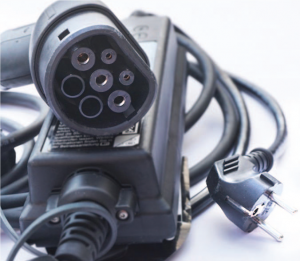
Upper Case Editorial
Right now, residential charge station suppliers include ChargePoint, Blink, ElectrifyAmerica, TESLA, EVGO and VOLTA. The year, make and model of your vehicle, as well as its charging receptacle, contributes to speed of charging and cost per minute, or kilowatt cost. The average cost when charging off-peak at home is .045 per mile when using .15 per kwh as the basis. Tesla and Lucid vehicles are the least expensive models to charge.

Joan Michelson
When charging away from home, the costs can vary widely. Electric owners use a subscription card or app on their phone to utilize most stations, however there are no regulations on what a station provider can charge, by time, kilowatt hour or both. Some hotels, casinos and retailers have provided the space and power as a customer service, but don’t bet on free charging forever. Only VOLTA does not require a subscription or charge for the power, covering their costs through sponsorship advertising placed on the station.
What’s down the road for new EV owners? Automakers across the globe are revamping their supply-chain sources for EV batteries by partnering or purchasing manufacturing capability. Even so, Joan Michelson (right) points out, “deciding which EV to buy is going to be complicated.” Michelson, the former head of Communications and co-head of sales and marketing at Chrysler’s Global Electric Motorcars, says buyers should be prepared to consider all kinds of variables: “Your lifestyle, your transportation needs, whether you have access to charging—I don’t, in a condo building, for example—where you drive regularly, whether it’s your only car or a second car, as well as overall cost of ownership.” She has watched the evolution of electric vehicles for two decades and speaks to all things electric in her Electric Ladies podcast.
Just back from the 26th UN Climate Change Conference in Glasgow, Scotland, Michelson offers some innovative ideas on the future of EV ownership and the new automakers behind them. “As the issues of lithium battery warranty, repair, disposal and sustainability become greater, there could be an
Joan Michelson OEM (Original Equipment Manufacturer) option for an EV lease subscription plan that balances the higher cost of an EV with the concern surrounding technology changes. Tax credits from the federal and state governments will also help consumers and manufacturers ease into the investment of an EV.”
Another appealing aspect of switching to an electric vehicle is the “dealer disruption” ushered in by Tesla. EV makers you’d never heard of a couple of years ago are bringing new technology and unique styling to the market—without dealership sales tactics or service centers. Rivian, Lucid and Lordstown Motors have made news with long-range trucks and luxury cars, and are now taking orders for delivery in 2022–2023.

www.istockphoto.com
 Michelson is especially interested in what’s happening at Piech Automotive—founded by Porsche family heir Anton Piech—which is creating a unique car company that has broken with traditional manufacturing theory. Peter Thiel, the founder of PayPal, is an investor and several “A-list car guys” from Porsche/VW Group, BMW, and TESLA have joined the company. Piech is offering short-term leasing of EVs; it will be interesting to see if this leads people to buy more EVs as a result of driving them for a few months—as well as the impact on dealerships, since they are leasing directly to consumers and not going through dealerships.
Michelson is especially interested in what’s happening at Piech Automotive—founded by Porsche family heir Anton Piech—which is creating a unique car company that has broken with traditional manufacturing theory. Peter Thiel, the founder of PayPal, is an investor and several “A-list car guys” from Porsche/VW Group, BMW, and TESLA have joined the company. Piech is offering short-term leasing of EVs; it will be interesting to see if this leads people to buy more EVs as a result of driving them for a few months—as well as the impact on dealerships, since they are leasing directly to consumers and not going through dealerships.

Audi
The Piech brand is built on the concept of modular vehicle components, long-range batteries and ultra-fast charging. Their sedan, SUV and sportscar designs use mix-and-match compatibility for plug-in, traditional ICE and hydrogen batteries capable of 80% charge in under five minutes—with simpler parts and software upgrades.
Taking a cue from Tesla, Ford, Toyota and other brands are testing the direct-to-consumer order process, eliminating the dealer haggling in order to compete with online showrooms and vendors such as Carvana and Vroom. Manufacturers are actually urging their dealer networks to revamp the old-time sales/service model to embrace EV charging as a revenue stream. AUDI is all-in on this idea, having built its first Charging Lounge back in December as a hub for business and social meet-ups in a café-type environment while your car is charging.
It’s in Germany, so don’t get excited yet. However, whether you are a current owner or still just window-shopping, you can get excited about the myriad ways that traditional automotive brands and dealerships will define themselves as part of the EV revolution.
Editor’s Note: Sarah Marks is a car concierge and automotive consumer advocate for all things car-related. Sarah lives in Henderson, Nevada with her husband, Norman. You can ask her car questions at her website: www.mycarlady.com.
“Waygu beef tartare is, in its elegant simplicity and focus on flavor, divine.”
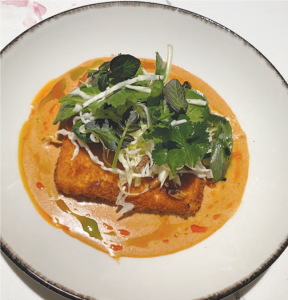 Two curries, a carbonara and a cassoulet, plus plancha’d fluke, pastrami’d salmon and a pudding of sticky dates are on Ehren Ryan’s always-evolving menu on this night at Common Lot, world tour and tour de force colliding at the two-storied epicenter beloved by fellow chefs and home cooks.
Two curries, a carbonara and a cassoulet, plus plancha’d fluke, pastrami’d salmon and a pudding of sticky dates are on Ehren Ryan’s always-evolving menu on this night at Common Lot, world tour and tour de force colliding at the two-storied epicenter beloved by fellow chefs and home cooks.
I break into the light crust of breaded paneer, swiping the milky cheese in its curry, a wash of sienna and olive green with dots of tangerine and lime. The colors are retro 1970s, but the tastes are fashion-forward. Ryan’s singularly clear-eyed abracadabra refreshes the roles of ginger, 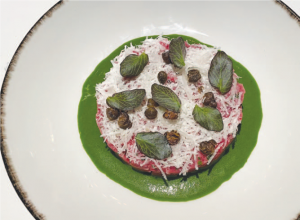 mustard seeds, cinnamon, turmeric and their comrades, allowing them to add warmth and depth and a mysterious range of emotions to a dish gone stale. Fried paneer, the mozzarella sticks of South Asia, is no longer the equivalent of bar food; it simply raises the bar on what to do with a staple whose frequent modifier is bland.
mustard seeds, cinnamon, turmeric and their comrades, allowing them to add warmth and depth and a mysterious range of emotions to a dish gone stale. Fried paneer, the mozzarella sticks of South Asia, is no longer the equivalent of bar food; it simply raises the bar on what to do with a staple whose frequent modifier is bland.
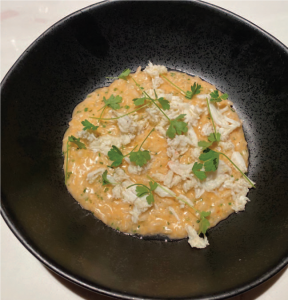 Its tangle of greens, leaves of emerald, forest and hunter veining rich cordovan, tango with a chiffonade of pale, crunchy cabbage and puffed rice kernels. You’ll want to make the effort to get some of everything on your forkful—paneer, curry, leaves, crisped things—so you can understand what Ryan has orchestrated: peak culinary confluence.
Its tangle of greens, leaves of emerald, forest and hunter veining rich cordovan, tango with a chiffonade of pale, crunchy cabbage and puffed rice kernels. You’ll want to make the effort to get some of everything on your forkful—paneer, curry, leaves, crisped things—so you can understand what Ryan has orchestrated: peak culinary confluence.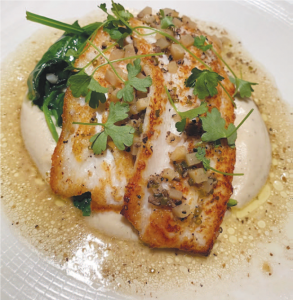
In the six years since Ryan, who hails from Australia, and his wife Nadine, born in Austria, opened Common Lot in Millburn, they have been influencing those open to exploration of new foods as well as forever-there foods in need of a re-set. More than any other Garden State restaurant serving forth in this century, Common Lot has presented the next big thing. And when it’s done with it, typically well before it’s run its course, it’s gone. To be replaced, we soon learn, by chef’s sorcery, a combination of whimsy, whim and, always, wisdom.
I may miss the dish I always thought of as bo ssam lamb, but I’ll never believe I’m settling for an also-ran in the meat department with Waygu beef tartare, showered with salty parmesan that rather looks like flakes of sea salt, near-translucent wisps of pickled onion and capers, fried until beautifully bloated and pricked open so they, too, can add their rush of salinity to the plush beef. It’s all encircled by a puree of arugula that brings more than a spot of pepperiness to the dish. If Ryan wanted to play cute, he could call this Salt & Pepper Beef. But he needs no gimmicks, not in title, not in concept. His Waygu beef tartare is, in its elegant simplicity and focus on flavor, divine. Similarly, he’ll cure salmon with pastrami seasonings and present it with carved petals of ginger, a subtle crème fraiche and dabs of salmon roe. The result: equal parts restraint and reverie.
There are occasional missteps. Risotto is brushed up with crab bisque, but its sauce is out-of-whack acidic. I’m guessing the lemon employed was the culprit, either inherently lacking acid-to-fruit balance or too liberally applied. I love the idea of creamy crab with sturdy Italian rice and ate up every shred of lump crab and micro-leaves of celery garnishing the dish. Maybe use Meyer lemons here?
They’ll figure it out, I think to myself as I bust open a fillet of plancha-seared fluke. I’m skeptical about this dish, not because I haven’t had expertly cooked fish here many times before, but because it’s billed to come with a truffled brown butter as well as a celeriac-truffle puree. Pretty much anything with truffle oil obscures the taste of what it comes in contact with. Yet no aggravated assault on an innocent ingredient here, but rather a minuet between the mash of oniony-celery-sweet-garlicky root vegetable and its controlled musky-nutty partner—and a nifty pas-de-deux of lightly briny, faintly sweet fish and woodsy truffle. Learning is good, isn’t it?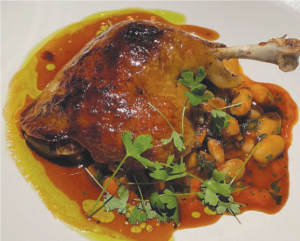
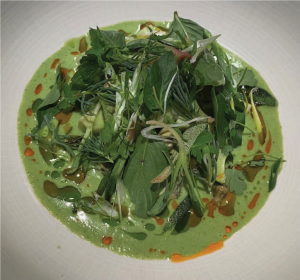 Speaking of woodsy and musky, the star of duck leg confit cassoulet is the refined duck jus, which penetrates the preserved leg, the white beans, the slivers of sausage, nibs of carrot and what appeared to be a few teeny cubes of an ivory root vegetable so smitten with the duck juice that it went Zelig. Quite the entertaining mimic.
Speaking of woodsy and musky, the star of duck leg confit cassoulet is the refined duck jus, which penetrates the preserved leg, the white beans, the slivers of sausage, nibs of carrot and what appeared to be a few teeny cubes of an ivory root vegetable so smitten with the duck juice that it went Zelig. Quite the entertaining mimic.

A pale green curry, with coconut milk as its base and Thai basil as its muse, is invigorated with chili oil and, in turn, invigorates a stew of shellfish and finfish. I don’t want to ruin the Pollock-like speckles and drips of oil that give the plate the kind of eye-candy appeal I personally shun, but once I swish the chili oil into its honeydew-hued broth, I know it’s all meant to be. A lemon cake that was to be soaked with vanilla was too dry to mean much to its plate mates of yuzu curd and mascarpone, let alone crumbles and grains of pistachio. But a sticky date pudding given the surround-sound treatment of a sleek caramel made from prunes and brandy was topped by a blot of clotted cream that seemed too generous until I demolished it all and wanted more, please. Ryan and his kitchen crew may seem all over the map, but when they go cheeky with an old-school dessert like this, I’m glad to be gobsmacked. Is that the carbonara? Passing right by me is 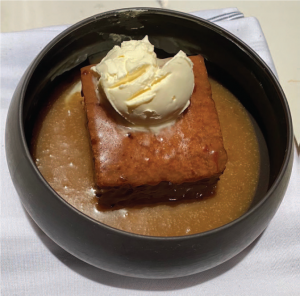 something I’ve not ordered on this night at Common Lot. My, it looks fine. I smell smoky and I feel my gastric juices start to flow again. That’s what Ehren Ryan, the maestro of this worldly-yet-welcoming kitchen in staid, sedate Millburn, will do to you. If you’ve been to Common Lot before and thought you’d seen it all, go back, now. See what a visionary can do, pandemic in play, but in all ways that matter to his mission, a never-no-mind. Taste today what others may attempt not tomorrow, but in a decade. Or longer.
something I’ve not ordered on this night at Common Lot. My, it looks fine. I smell smoky and I feel my gastric juices start to flow again. That’s what Ehren Ryan, the maestro of this worldly-yet-welcoming kitchen in staid, sedate Millburn, will do to you. If you’ve been to Common Lot before and thought you’d seen it all, go back, now. See what a visionary can do, pandemic in play, but in all ways that matter to his mission, a never-no-mind. Taste today what others may attempt not tomorrow, but in a decade. Or longer.
Editor’s Note: Andy Clurfeld is the founder and editor of The Peasant Wife, an online culinary journal all about and only about the Garden State’s foodways. Find more of her stories, as well as those from other leading culinary journalists, at www.thepeasantwife.com.



